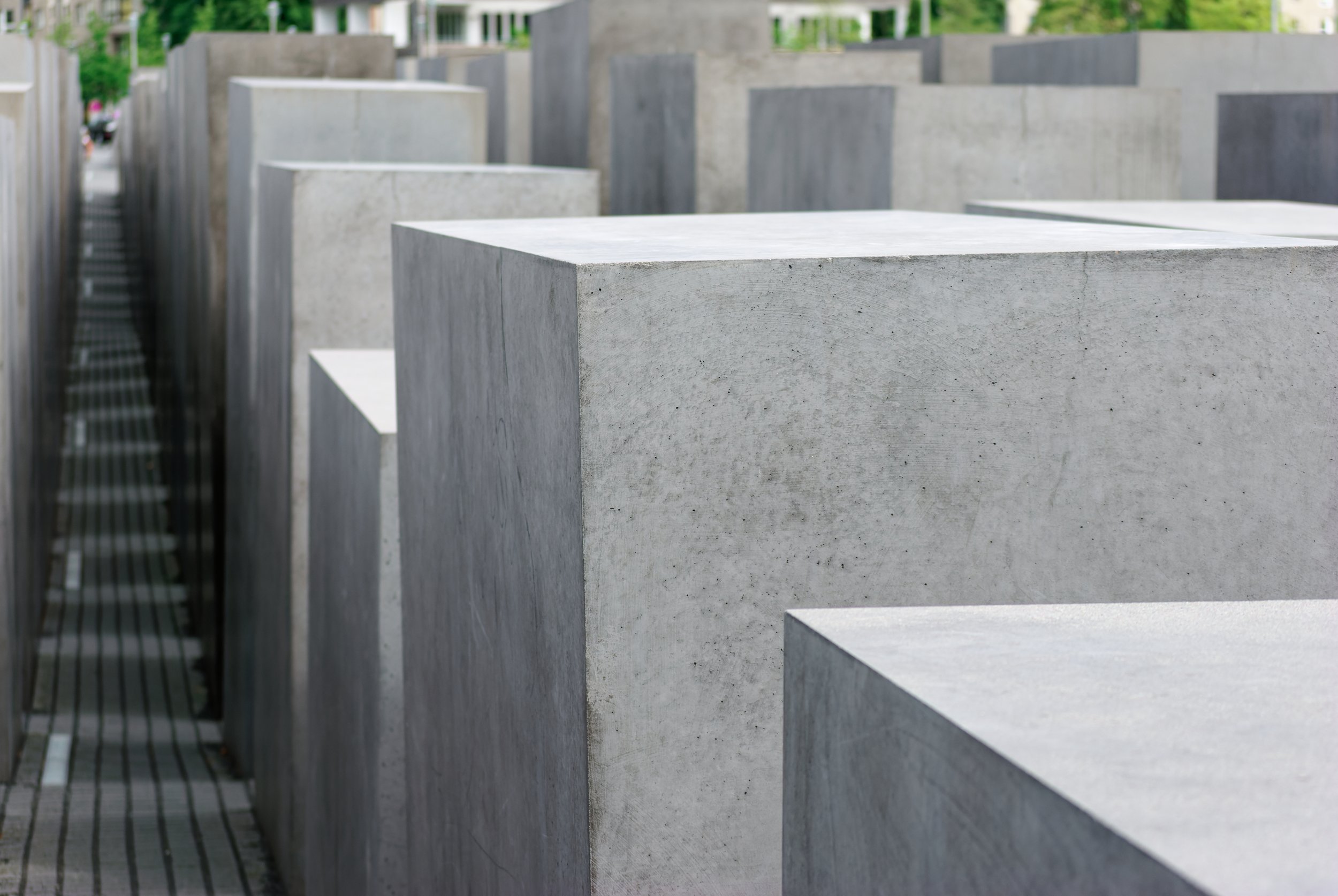158 - Holocaust Memorial Jamboree (Berlin, Germany)
“This project manifests the instability inherent in what seems to be a system, here a rational grid, and its potential for dissolution in time. It suggests that when a supposedly rational and ordered system grows too large and out of proportion to its intended purpose, it loses touch with human reason. It then begins to reveal the innate disturbances and potential for chaos in all systems of apparent order.” (See Eisenman Architects website.)
Um, ‘kay. The Memorial to the Murdered Jews in Europe fascinates the hell out of me on so many levels. I’ll let Wikipedia do the describing:
“The Memorial to the Murdered Jews of Europe[1] (German: Denkmal für die ermordeten Juden Europas), also known as the Holocaust Memorial (German: Holocaust-Mahnmal), is a memorial in Berlin to the Jewish victims of the Holocaust, designed by architect Peter Eisenman and Buro Happold. It consists of a 19,000-square-metre (200,000 sq ft)[2][3] site covered with 2,711 concrete slabs or "stelae", arranged in a grid pattern on a sloping field. The original plan was to place nearly 4,000 slabs, but after the recalculation, the number of slabs that could legally fit into the designated areas was 2,711. The stelae are 2.38 m (7 ft 9+1⁄2 in) long, 0.95 m (3 ft 1+1⁄2 in) wide and vary in height from 0.2 to 4.7 metres (8 in to 15 ft 5 in).[2] They are organized in rows, 54 of them going north–south, and 87 heading east–west at right angles but set slightly askew.[4][5] An attached underground "Place of Information" (German: Ort der Information) holds the names of approximately 3 million Jewish Holocaust victims, obtained from the Israeli museum Yad Vashem.[6]”
The memorial is a stone's throw from the Brandenburg Gate. My random bicycle perambulations led me there in due course. It’s a striking architectural anomaly, one that demands exploration. Given its grim representation, I assumed this vast expanse of tombstone-style concrete blocks would be a place of reverence and somber reflection. Nuh-uh.
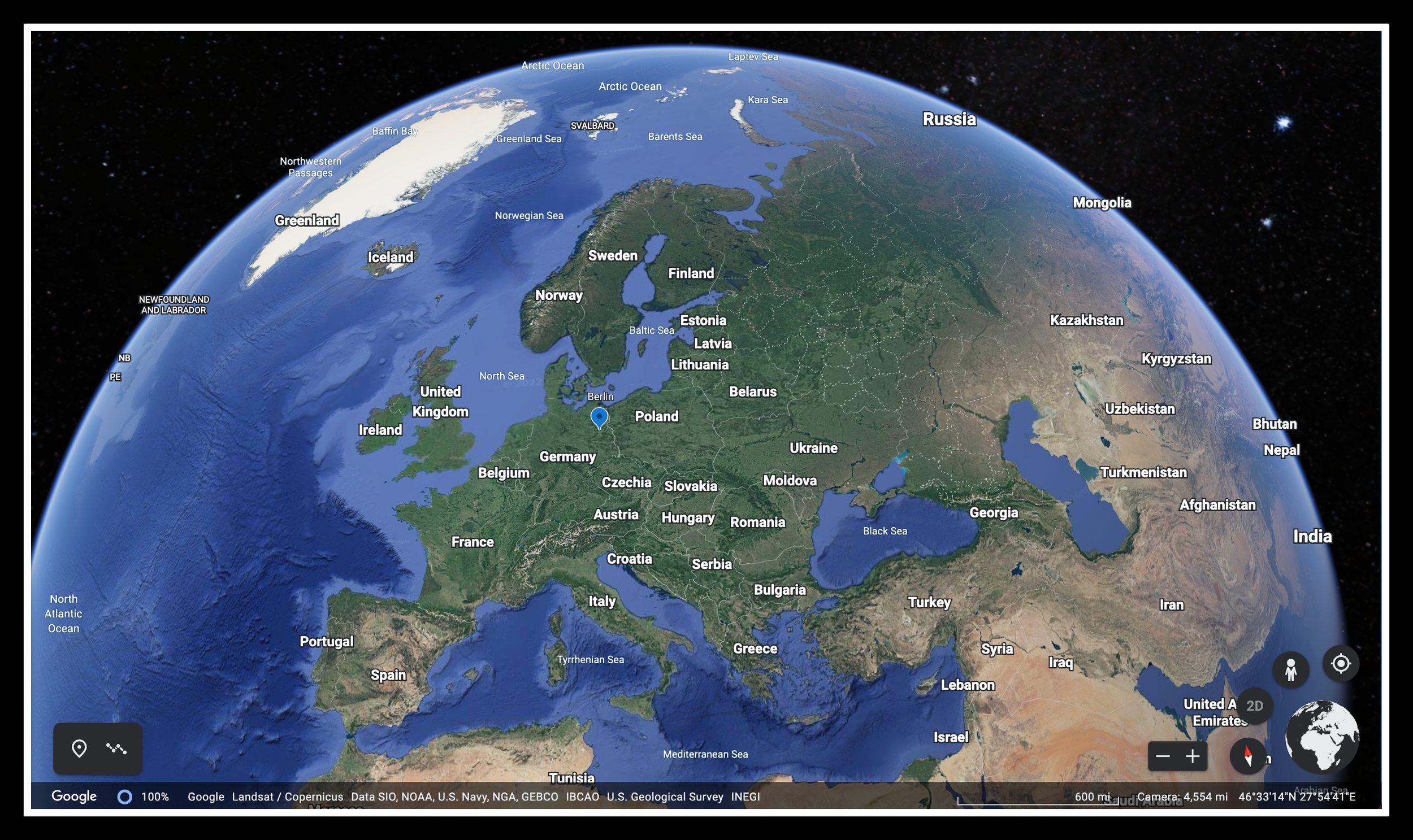
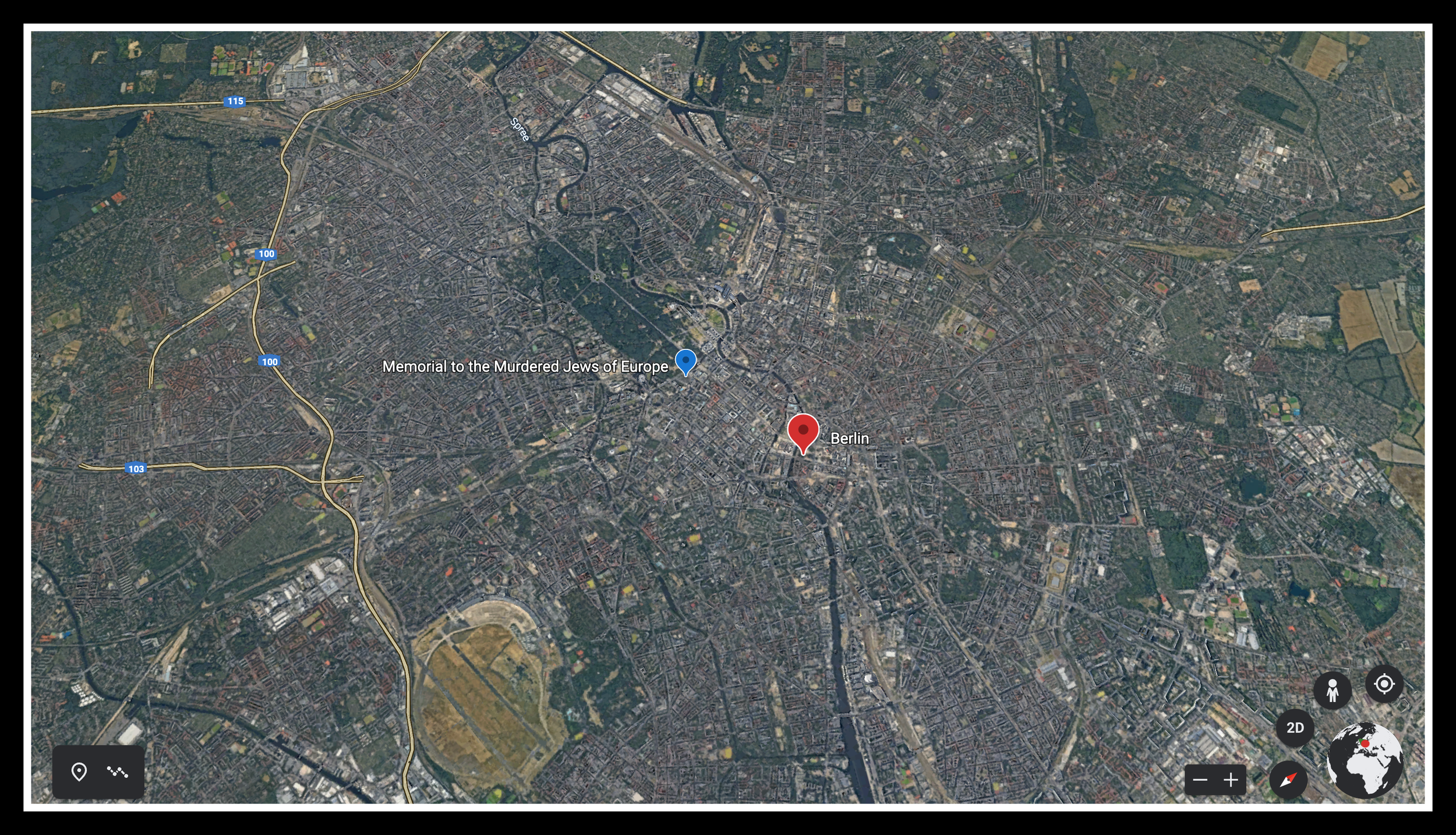
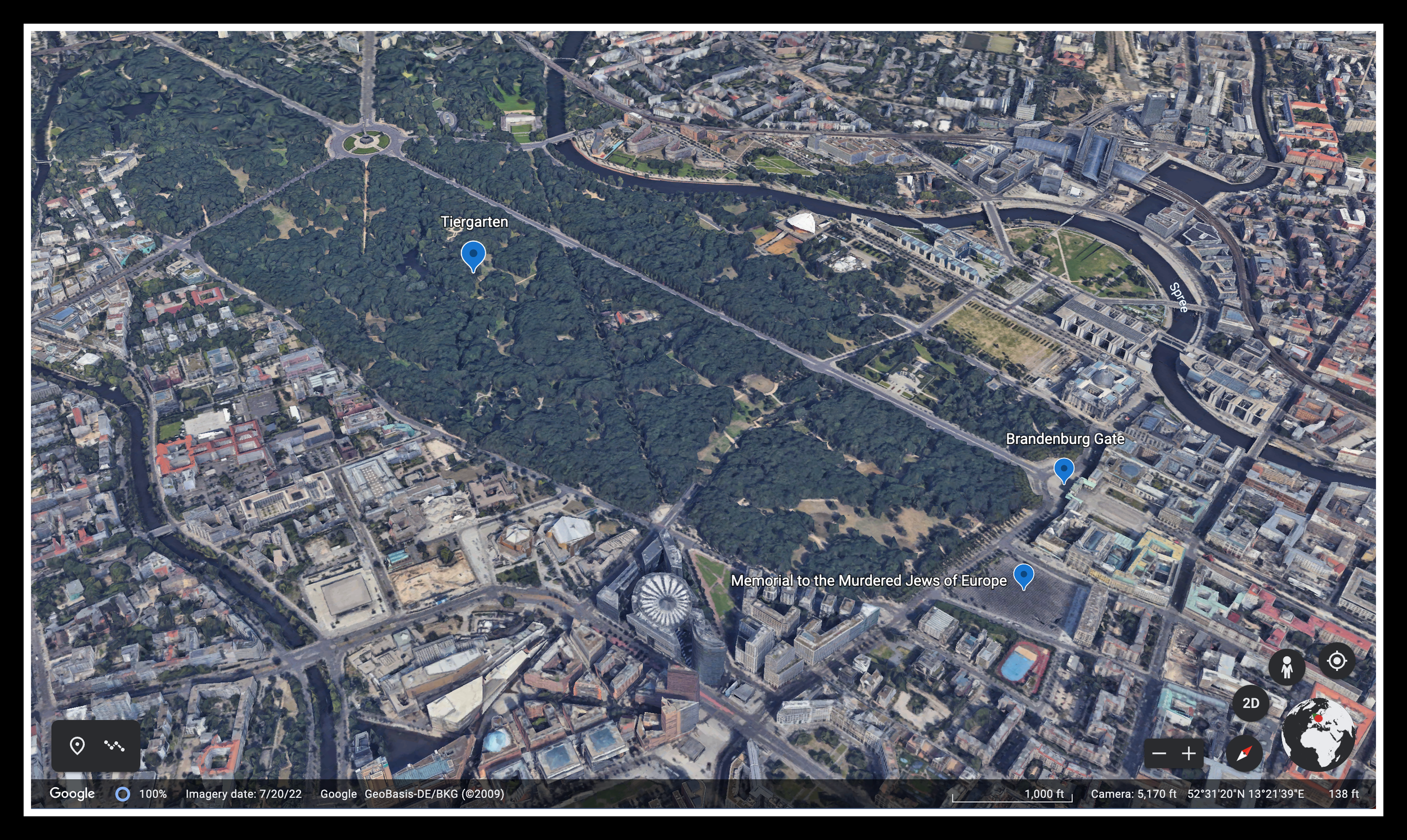
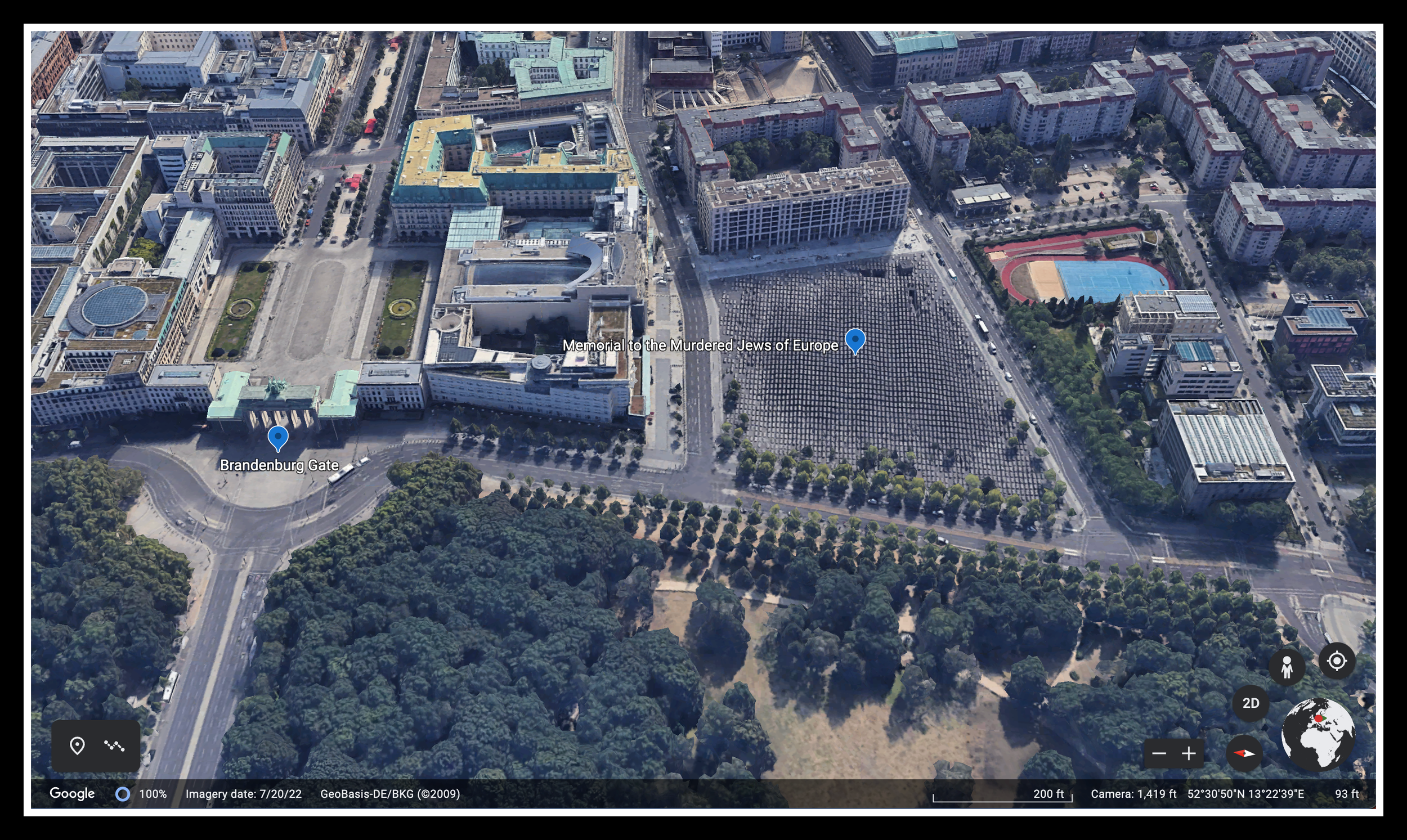

Instead, I discovered adults and children behaving like the memorial was a low-brow concrete fun park, not a site dedicated to the attempted extermination of an entire class of people. Folks were sitting, napping, standing, and skipping across the blocks the way I used to hop from stone to stone in a local stream. I was fucking flabbergasted amid what felt like irreverent profanity. Most perpetrators were children, though in full view of and tacit approval of parents. Some even encouraged the behavior by having “cute” pictures taken of the kids standing atop the blocks.
No one else seemed to be on my wavelength, which led me to question the validity of my perception. Signs on the ground along the memorial’s edge did encourage quiet within the columns and cautioned visitors against leap-frogging the stelae. Security personnel reprimanded a few hoppers, but admonitions almost seemed half-hearted at best, related more to safety than respect.
While sipping coffee at a rooftop café overlooking the memorial, I asked a waitress (from England) her opinion. My viewpoint never occurred to her. Another friend told me the “tombstone” interpretation is one of many. Sure, but it’s still a Holocaust memorial, right? I suppose it is in a public square open to all twenty-four hours a day, and the blocks are exceedingly plain. Had I not been aware of the site's significance, I would’ve probably unleashed my inner kangaroo as well.
In the abstract, it doesn’t convey an overwhelming sense of deference, but its high-profile location and the sheer amount of press before, during, and after its completion means you’d have to be almost shockingly clueless. I thought, Is this or is this not a fucking Holocaust memorial? If it were on the grounds of Auschwitz or Dachau, I doubt we’d see children playing hide-and-seek or couples smoochie grab-assing each other.
Berlin Memorial To The Murdered Jews Of Europe
The design begins from a rigid grid structure composed of 2,711 concrete pillars, or stelae, each 95 centimeters wide and 2.375 meters long, with heights varing from zero to 4 meters. The pillars are spaced 95 centimeters apart to allow only for individual passage through the grid. Each plane is determined by the intersections of the voids of the pillar grid and the gridlines of the larger contex… Read More
The Inadequacy of Berlin’s “Memorial to the Murdered Jews of Europe”
Richard Brody - July 12, 2012
Just south of the Brandenburg Gate is Berlin’s Holocaust Memorial, with its two thousand, seven hundred and eleven gray concrete slabs, or stelae. They are identical in their horizontal dimensions (reminiscent of coffins), differing vertically… Read More
The site’s nondescript nature is belied by the underground "Place of Information" museum, holding the names of approximately three million Holocaust victims. It contains a general history punctuated with individual tales of horror. “The Room of Families” highlights the havoc wreaked upon entire lineages, along with locations and forced migrations throughout Europe. “The Room of Names” underscores individuals by projecting a name on all four walls of a darkened room while a biography is read aloud. Another room includes correspondence and journal entries from first-hand experiences. Many have a footnote with the words, “The fate of [insert name] is unknown.” There’s also a searchable database for anyone wishing to trace relatives. Names are still being added.
I’ve had a hard time finding outright praise online. Criticism rises from every angle. It’s not literal enough, lacking any direct reference to the Holocaust. The "Place of Information”, which does make the memorial’s intent clear, is hidden underground… or not hidden enough. Its location on the eastern edge disrupts the memorial’s continuity and underlying theme (whatever that is). It’s too focused on murdered Jews, ignoring homosexuals, Roma, and other identifiable groups. It’s not focused enough on Jews. It feeds an unhealthy obsession with the Holocaust. It doesn’t belong in Berlin. Shoddy construction. Sends the wrong message. Doesn’t indict the Nazi regime. Unjustly absolves Germany of its historical guilt… so on and so forth.
Interpretations? Good luck with that. Interpretations are like assholes. Everybody has one. An internet search will lead one down a rabbit hole of potential symbolism and metaphor. Peter Eisenman (architect) denies it all.
As I sat reconciling my laid-back nonjudgmental nature with a growing disdain for humanity as a species, something struck me: This might just be fucking brilliant. The monument is as nebulous as the act of trying to understand the Holocaust itself. Those that pass by in ignorance are on the perilous road to forgetting, while those in the know bicker over the point. No matter how many times you visit, you’ll never get a handle on it. No matter how much you study the Holocaust, you’ll never really understand. You’ll have your own interpretation, and you’ll read others, but you’ll never quite be able to decide what this rectilinear layout of stelae signifies or represents. And, even if you settle on meaning, you’ll change your mind the next time around.
The Holocaust was horrific and must be eternalized as a cautionary tale of humanity’s negative potential for future generations. And yet, no one will agree on the specifics of how to do that, much like no one will ever agree on how and why it ever came to pass in the first place. The memorial feels like a tangible, fluid representation of the past, present, and future struggle of Jews specifically, and human atrocity in general. Viewing the scene through this lens made me feel like I was watching artwork reshaping itself, a work in progress, never to be completed.
I remember thinking the cultural nonchalance I witnessed couldn’t be in line with the designer’s intent, could it? I mean, Peter Eisenman is Jewish, after all. He’s been quoted as saying, "I want it to be a part of ordinary, daily life. People who have walked by say it's very unassuming... I like to think that people will use it for shortcuts, as an everyday experience, not as a holy place." Well, that altered my perspective… for about five minutes. Then, I thought, An unassuming Holocaust memorial? What. The. Fuck. I don’t think so. Either it’s a memorial to six million dead people or it isn’t. There’s no happy medium.
Or is there? I swung back around to the “inherent brilliance” conclusion. My first reaction was disgust. I'm going with that. But that’s my interpretation. That’s the beauty of art. At some point, the artist’s intent is irrelevant. A piece, once completed and unveiled, is no longer the sole property of its creator. It belongs to anyone who takes the time to appreciate it. I don’t care what Mr. Eisenman intended, or what he meant. I only know its effect on me. I just assume hold a birthday party at Auschwitz then gambol through this site. When all is said and done, it just feels wrong to me. But then again, maybe I’m the asshole.











